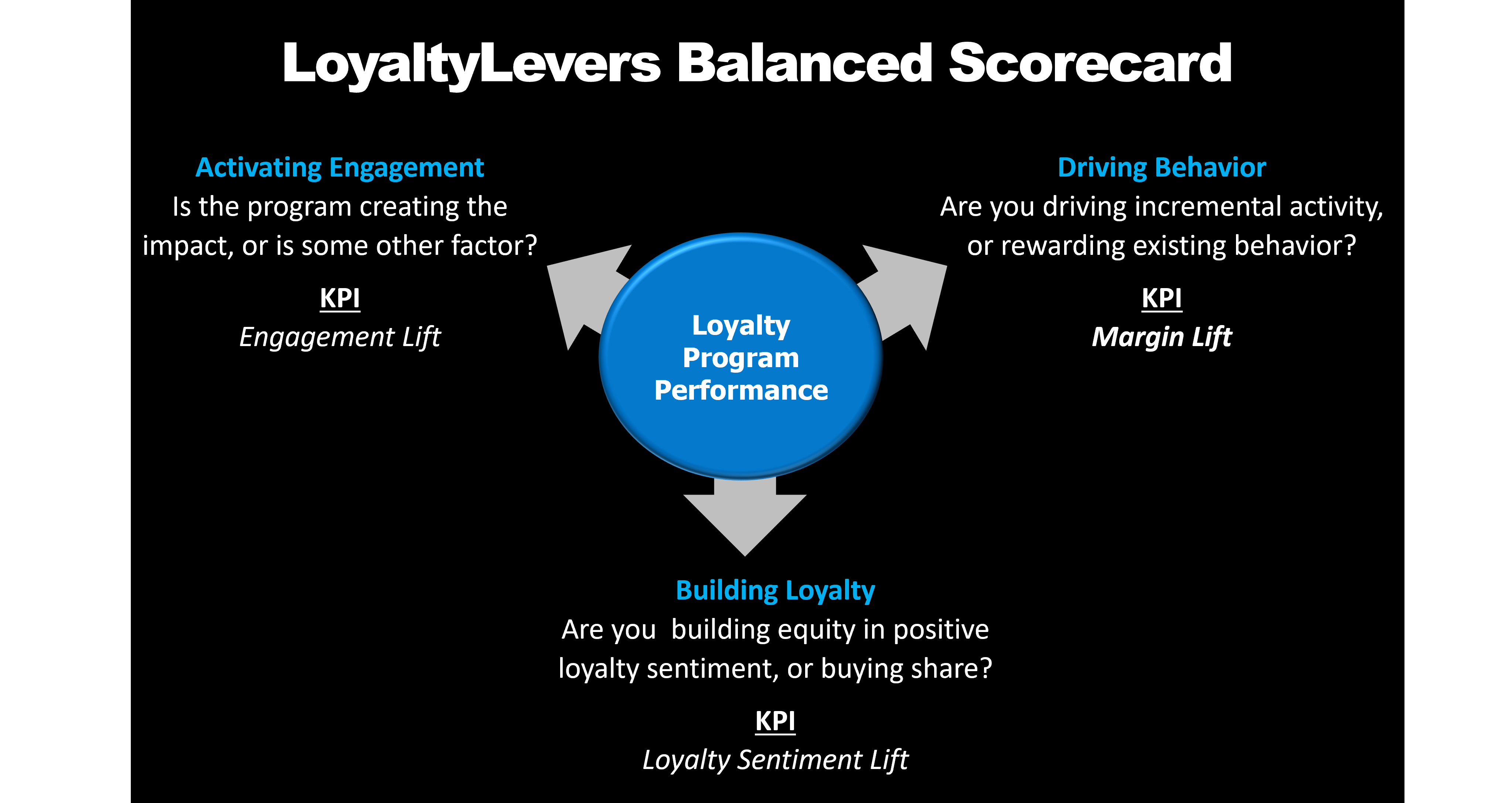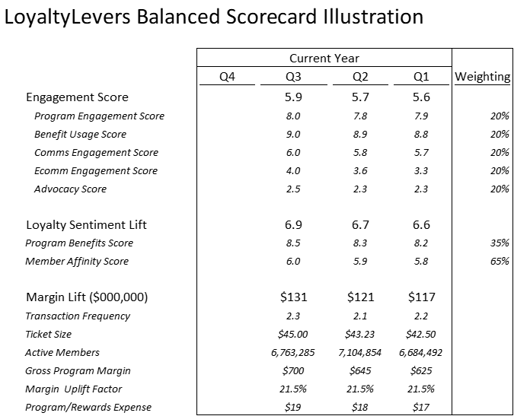Loyalty KPI's
The LoyaltyLevers Balanced Scorecard overcomes the deficiencies of relying on any single indicator to measure loyalty program success. By focusing on each of the three Levers, and answering the underlying business questions for each, executives can have a full understanding of loyalty program performance.

Measuring Loyalty Program Effectiveness
Loyalty Program KPI: Engagement Lift
Loyalty Program Engagement provides a leading indicator to performance. High and growing levels of engagement will lead to good things for loyalty sentiment and program ROI, whereas declining ratings will eventually result in performance decreases across the board. There are 5 dimensions to loyalty program engagement, including engagement with the program and individual benefits, engagement with communications and the website & app. Perhaps most important and elusive is creating and tracking advocacy, another key measure. Through a comprehensive analysis, available data is gathered for a minimum 3-year period, and scoring algorithms are developed in order to calculate loyalty program metrics.
Loyalty Program KPI: Loyalty Sentiment Lift
Because loyalty is an emotion as well as a behavior, measuring emotional loyalty necessarily involves surveys. The indicators of customer loyalty include two dimensions: Program Benefits and Member Affinity. Taken together, these two elements provide a critical take on the power of the loyalty program, and the impact it is having on emotional loyalty.
Program Benefits includes measures of Value, Ease and sense of Appreciation. The Member Affinity dimension gets more directly at the key sentiments that matter most, zeroing in on likelihood to maintain existing business, try new products/services and recommend the program to a friend. In addition, a key measure is the degree to which customers will go out of their way to use a product or service. It is a true indicator of customer loyalty when a member will opt to visit a retail store that is a little further away, wait until a for a favorite service provider can be scheduled or forego a discount at a competitor to use your brand.
Loyalty Program KPI: Margin Lift
Measuring ROI for Loyalty programs is tricky due to challenges in establishing causality: does the loyalty program increase the customer’s spending, or do better customers find it valuable to join the program? Due to this self-selection bias, the LoyaltyLevers approach focuses on measuring changes in key measures, and using those as the basis for estimating the impact on profit margin.
Each of the Key Measures is comprised of 10+ individual metrics that are aggregated in a weighted fashion that is customized for each brand and going far beyond traditional measures such as a customer retention KPI The measures are then tracked over time, providing a read of results across pre-planned test cases for different member segments. As usage of these Key Measures matures, you’ll gain a good sense of the relationship between gains in the measures and differing loyalty strategies. Through a robust test and learn program, targeting member segments with varying treatments, you’ll begin to get a sense of the loyalty program benchmark – what would performance be without the loyalty program itself?
Pulling it All Together
The LoyaltyLevers Balanced Scorecard provides a comprehensive view of program performance. Of course, increasing Margin lift is a key goal, but a sole focus on this metric can lead to destructive changes that sacrifice long term prospects by removing benefits or shifting focus from program engagement. Within each of the primary KPI’s, the individual scores provide strong diagnostic power, informing strategic and tactical decisions regarding rewards, benefits and communications.

For the detailed LoyaltyLevers Scorecard, including engagement scoring methodology, survey design for measuring sentiment, and best practices for estimating ROI, please click here.
